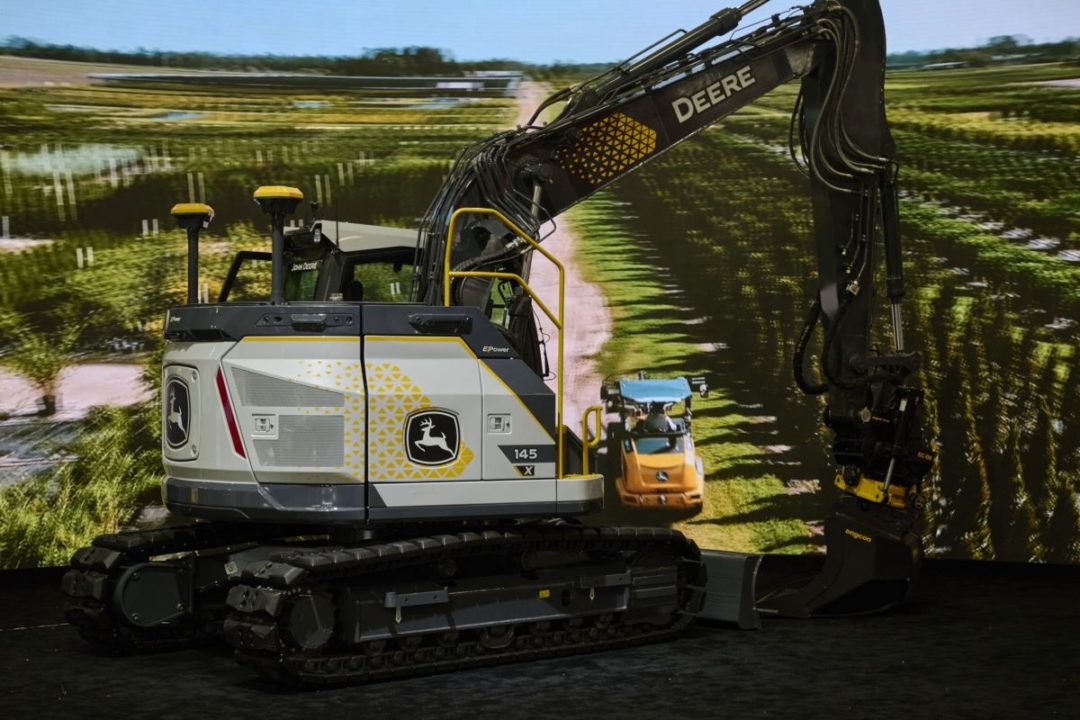
Visit Our Sponsors |
|
|
|
|
|
|
|
|
|
|
|
|
|
|
|
|
|
|
|
|
|
|
|
|
|
|
|
|
|
|
|
|
|
|
|
|
|
|
|
|
|
|
|
|
|
|
|
|
|
|
|
|
|
|
|
|
|
|
|
|
|
|
|
|
|
|
|
|

A John Deere 145 X-Tier electric excavator. Photographer: Bridget Bennett/Bloomberg
As electric SUVs and sedans roll onto American highways, diesel still reigns supreme on U.S. construction sites. But walk around the industry’s largest trade conference in Las Vegas March 14-18, and the first signs of battery power have finally arrived.
In the first meeting of the largest machinery conference in North America since the pandemic, every major heavy-equipment manufacturer is putting electric models front and center on the exhibition floor. Caterpillar Inc., Deere & Co., Komatsu Ltd. and Volvo AB are among the hundreds of household names and niche companies showing off fully electric excavators, skid-steer loaders and wheel loaders to more than 130,000 attendees looking for the next big thing in construction.
“It’s everywhere here. No matter where you look, it’s displayed front and center,” Jon Gilbeck, the global leader of Deere’s marketing, strategy and electrification, said at ConExpo, a once-every-three-year showcase for the latest and greatest in earth-moving machinery. “We’ve been talking with well over 100 customers that are very interested and have CO2 reduction goals today.”
That marks a major departure from the 2017 show, when electric wasn’t really on the radar. And in March 2020, with the event scheduled the same week the World Health Organization declared COVID-19 a pandemic, attendees were more concerned with how to seal deals without handshakes than with the carbon footprint of heavy equipment.
The industry’s nascent shift toward electric comes as the world gets serious about reducing carbon emissions and its reliance on fossil fuels that power some of the heaviest industries. Still, the move has been incredibly slow for machinery producers, who haven’t transitioned nearly as swiftly as the automotive industry.
For years, battery power has been gaining a foothold in personal vehicles, with EVs accounting for 5.8% of all light vehicles sold in the U.S. last year, up from 3.2% the year before, according to Motor Intelligence, an automotive research firm. That’s expected to quickly accelerate, with many automakers targeting sales of 40% to 50% by 2030. But the transition has been much slower in the heavy machinery sector, even as self-driving capabilities leapfrog ahead.
“Some are looking to purchase today,” Deere’s Gilbeck said of electric machines. “Some I would say are earlier in their journey.”
Part of the issue is size. The average automobile weighs just a couple of tons and rarely carries more than half a ton in weight. An excavator might weigh 10 tons. A machine that size would need a massive — and expensive — battery to power it. The charging infrastructure for a whole construction fleet also isn’t available on most work sites. Multiple machinery companies at the event said the main reason for the slow uptake in the U.S. is the lack of incentives like those offered in Europe.
Volvo has been selling certain fully electric diggers across Europe, and is aiming to begin delivering them to U.S. customers within a year. Caterpillar has multiple electric prototypes on display this week, but few are being deployed by its customers worldwide today.
“We will have the products ready for when our customers want them,” Caterpillar chief executive officer Jim Umpleby said in an interview on the sidelines of the event. “Yes, there is some pull for that, yes, there is some demand. The question is, how quickly will it ramp and how quickly will it be adopted globally given the global footprint we have? It’s going to take some time.”
RELATED CONTENT
RELATED VIDEOS
Timely, incisive articles delivered directly to your inbox.






